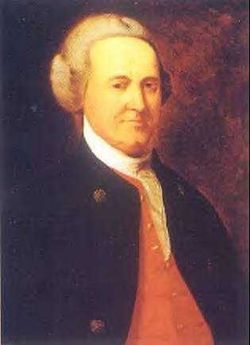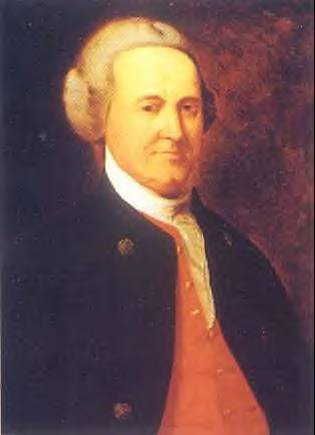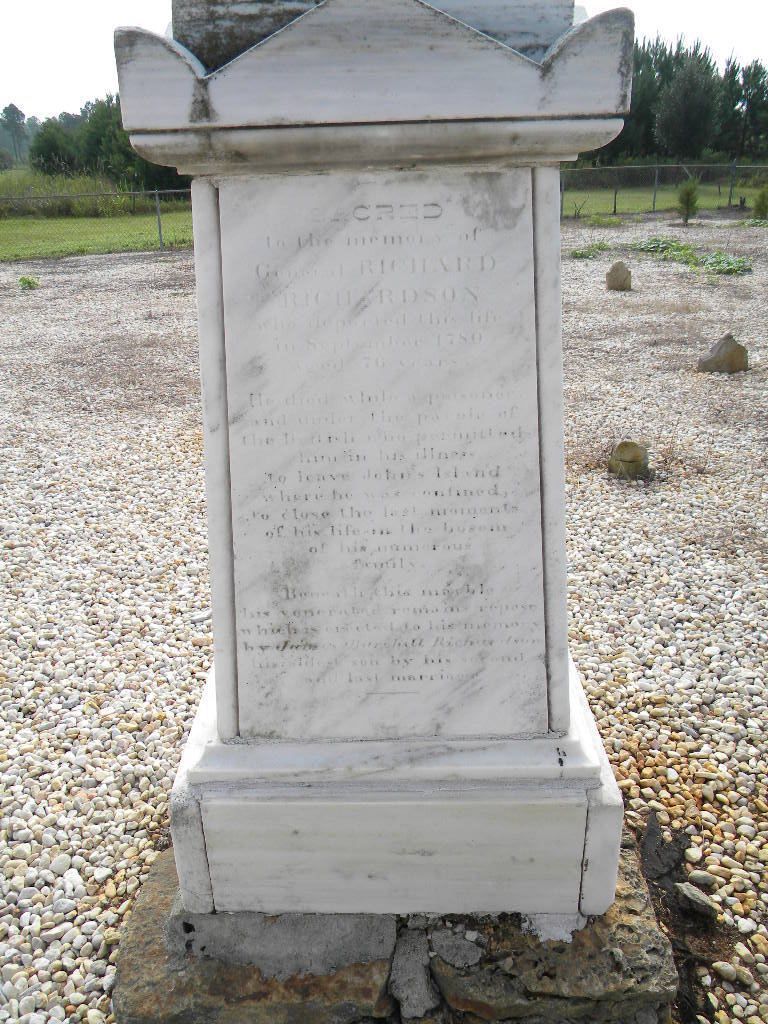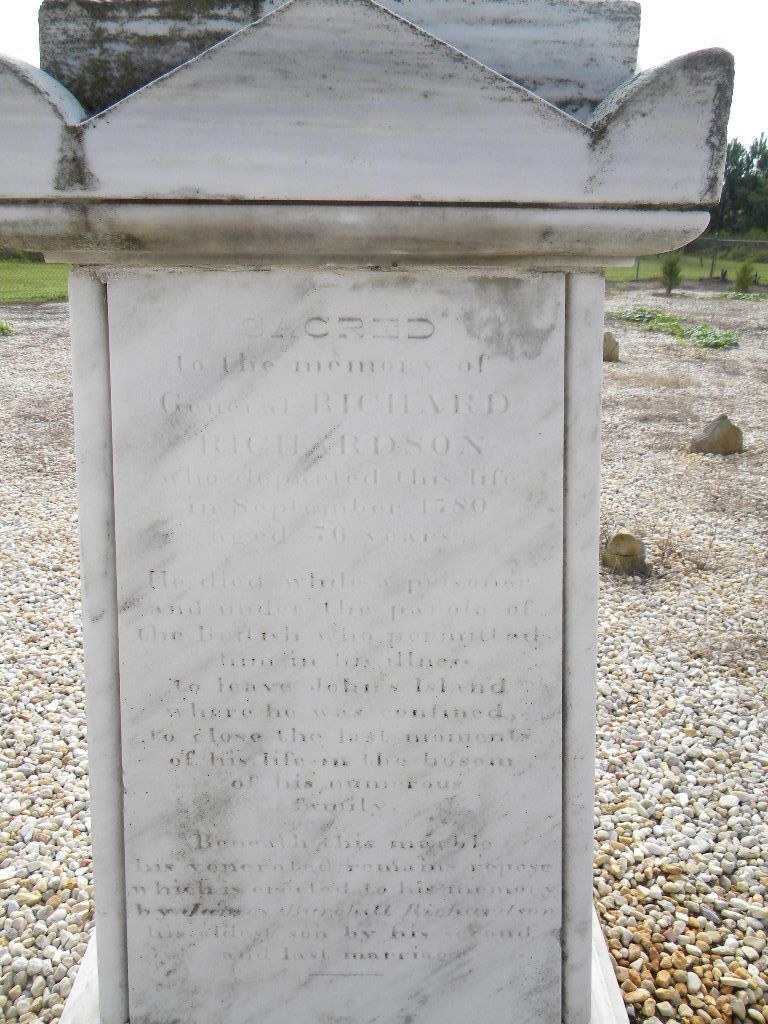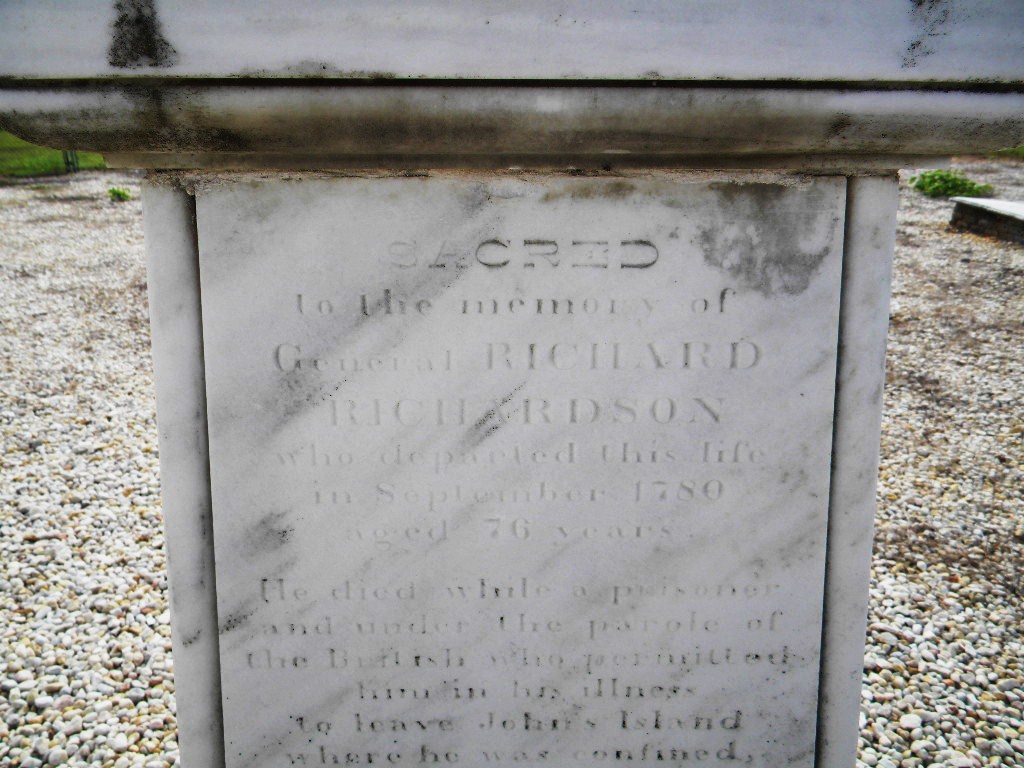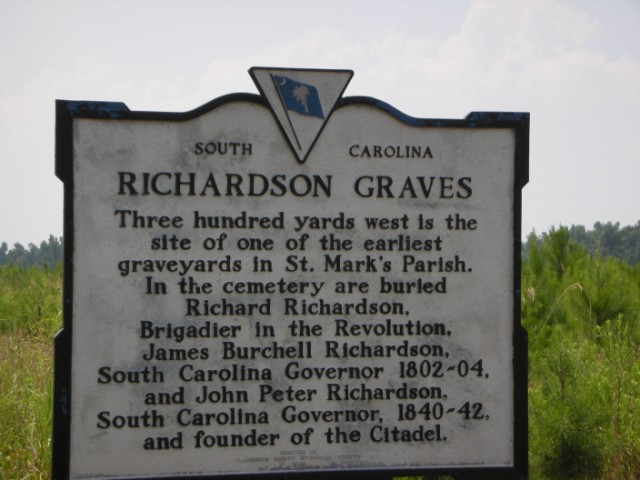Revolutionary War Militia Brigadier General. The name of his early and university education has not been determined, but due to his respectable parentage and large family connections he most likely enrolled in Virginia University. He became a land surveyor and in the 1730's moved to South Carolina. At the time surveyors were considered one of the most honorable professions and thus, Richardson became one of the leading men in the State. In South Carolina his reputation for high character soon won him the confidence of his constituents and he was repeatedly selected as judge and arbiter of most feuds.
Richardson later commanded the militia of South Carolina in campaigns against the Indians where his reputation as a officer was first noted. In the Cherokee Indian war of 1760 and 1761 he acquired a colonel's commission. Realizing the imminent conflict with England he was was elected a delegate to the First Provincial Congress at which he would assist in framing the first constitution and was elected a member of the legislative council.
Prior to the official start of the Revolution, Richardson was appointed a Brigadier General. Continued disturbances against the Whigs by the Tories in the upstate commanded him to quell the disturbances by force. He brought his army of 1000 men to engage the Tories and later crushed them and any possible successful future reorganization. This was later known as the "Snow Campaign" and was credited with the drastic reduction in Tory violence and insurrection.
Richardson went on to participate in the battle of Sullivan's Island in June of 1776, the battle at Savannah and the battle of Charleston in which the Continental Army surrendered to the British in 1780. Richardson was made a prisoner after the fall of Charleston and would be confined to his quarters until he fell gravely ill. He was given permission to return home and there died.
Colonel Banastre Tarleton, the English Colonel went looking for Rebels and came to Richardson's plantation and soon ordered his men to exhume the deceased Richardson. Tarleton claimed he wanted to view the face of the man with such decided character, but most felt it was to see if the family silver had been buried with him. Before leaving Tarleton would order everything burned and destroyed. Richardson's legacy continued through his descendants of which six became Governor of South Carolina.
Revolutionary War Militia Brigadier General. The name of his early and university education has not been determined, but due to his respectable parentage and large family connections he most likely enrolled in Virginia University. He became a land surveyor and in the 1730's moved to South Carolina. At the time surveyors were considered one of the most honorable professions and thus, Richardson became one of the leading men in the State. In South Carolina his reputation for high character soon won him the confidence of his constituents and he was repeatedly selected as judge and arbiter of most feuds.
Richardson later commanded the militia of South Carolina in campaigns against the Indians where his reputation as a officer was first noted. In the Cherokee Indian war of 1760 and 1761 he acquired a colonel's commission. Realizing the imminent conflict with England he was was elected a delegate to the First Provincial Congress at which he would assist in framing the first constitution and was elected a member of the legislative council.
Prior to the official start of the Revolution, Richardson was appointed a Brigadier General. Continued disturbances against the Whigs by the Tories in the upstate commanded him to quell the disturbances by force. He brought his army of 1000 men to engage the Tories and later crushed them and any possible successful future reorganization. This was later known as the "Snow Campaign" and was credited with the drastic reduction in Tory violence and insurrection.
Richardson went on to participate in the battle of Sullivan's Island in June of 1776, the battle at Savannah and the battle of Charleston in which the Continental Army surrendered to the British in 1780. Richardson was made a prisoner after the fall of Charleston and would be confined to his quarters until he fell gravely ill. He was given permission to return home and there died.
Colonel Banastre Tarleton, the English Colonel went looking for Rebels and came to Richardson's plantation and soon ordered his men to exhume the deceased Richardson. Tarleton claimed he wanted to view the face of the man with such decided character, but most felt it was to see if the family silver had been buried with him. Before leaving Tarleton would order everything burned and destroyed. Richardson's legacy continued through his descendants of which six became Governor of South Carolina.
Bio by: Saratoga
Inscription
Sacred to the memory of
General Richard Richardson
who departed this life
September 1780 Aged 76 years
He died while a prisoner and under the parole of the British who permitted him in his illness to leave John's Island where he was confined to close
the last moments of his life in the
bosom of his numerous family.
Beneath this marble his venerated remains repose which is erected to his memory by
James Burchill Richardson
his eldest son by his 2nd and last marriage."
Family Members
Advertisement
